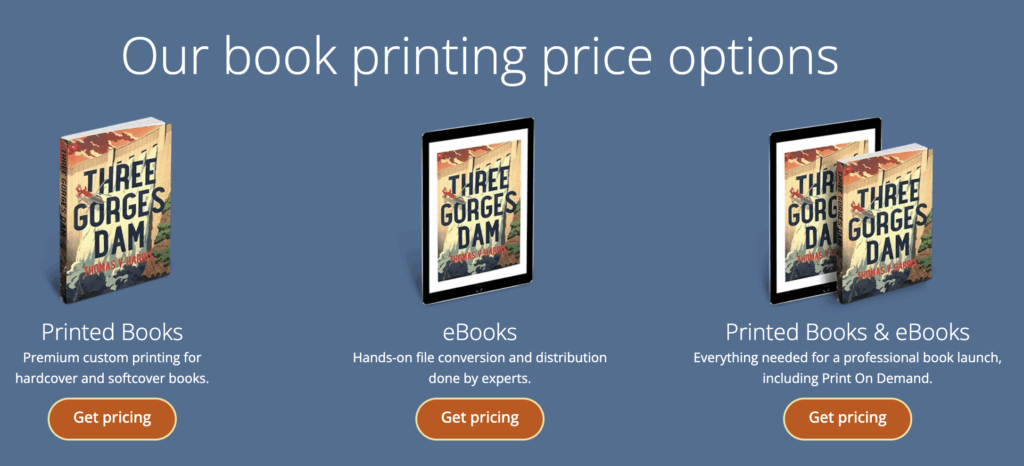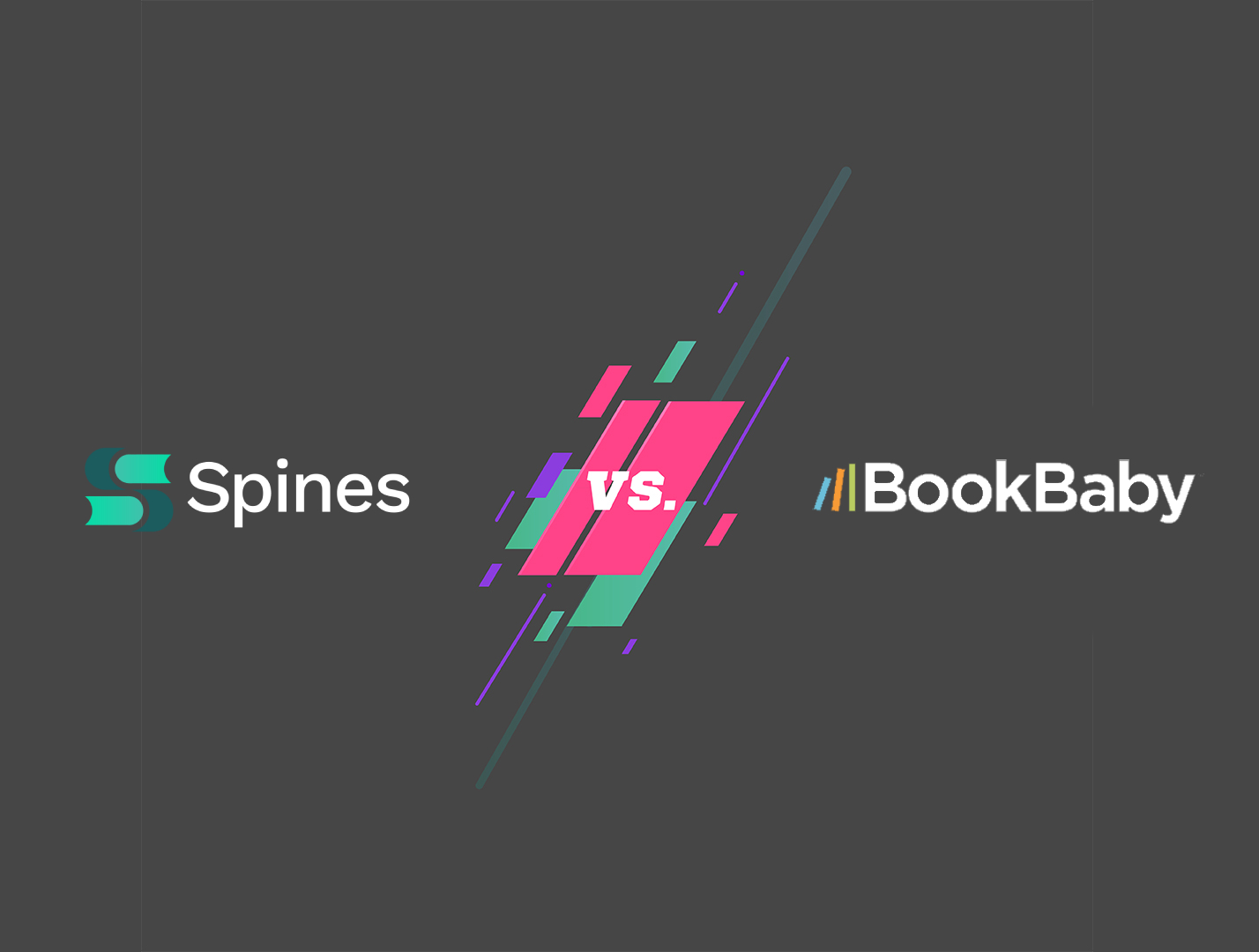Spines vs BookBaby: If you are currently on the self-publishing journey, you have probably researched the main competitors dominating the market (BookBaby, IngramSpark, etc.). While there are a wealth of options sprouting up on the internet, these companies are not all created equal.
This is perhaps the biggest reason BookBaby has dominated the self-publishing industry for the last decade. It provides services from proofreading and editing, to book design, to book marketing once your manuscript hits retailers. While Bookbaby’s strength has been its inclusive packages, hidden costs and lengthy time frames end up counterbalancing those seeming advantages.
The newest competitor on the market, Spines, has taken note of the pros and cons of the current self-publishing industry and seeks to innovate through an AI/in-house team collaboration to get your books published more efficiently. Manuscripts will get first-pass editing and formatting using state-of-the-art algorithm technology, which will then be double-checked by the Spines team for any overlooked errors. The hybrid dynamic of AI and in-house team editors promises to greatly reduce turnaround times and labor costs.
Can Spines compete with its top competitor? Here’s how BookBaby and Spines compare:
Pricing Comparison
When it comes to publishing your book, understanding the pricing structure is crucial. Both Spines and BookBaby offer flexible options, but the services included and their pricing models vary. Below, we’ll break down what each platform offers, so you can get a clear picture of the costs involved and decide which option best fits your needs and budget.
BookBaby Pricing

BookBaby offers a flexible pricing structure designed to meet the diverse needs of authors. Instead of fixed packages, authors can choose from three primary publishing options: Printed Books, eBooks, or a combination of both. This modular approach allows authors to create a tailored publishing plan by selecting services based on their individual preferences and project requirements.
The process begins with authors selecting their core publishing option—either Printed Books, eBooks, or both, with the option for Print on Demand (POD). Next, authors can customize their book by choosing trim size, page count, paper stock, and binding. Additional services such as cover design, formatting, distribution to global retailers, and marketing options like metadata optimization and promotion bundles are available. For those opting for printed books, POD ensures no upfront costs for large print runs. For example, a 50,000-word manuscript with cover design, formatting, POD, distribution, and marketing services could cost around $2,515, though this may vary based on customizations and additional services.
With this flexible approach, you have the freedom to customize your publishing experience and only pay for the services that matter most to you. However, keep in mind that the total cost can change depending on things like your book’s length and the extra services you choose. While this flexibility helps you stay within your budget, selecting premium services like professional cover design, marketing, or global distribution can quickly add up. So, it’s a good idea to carefully consider what you truly need to avoid any surprise costs down the road.
Spines Pricing

Spines offers three tailored publishing packages to suit authors across different genres, including non-fiction, fiction, and children’s books. The Signature package starts at $2,710 for a 75,000-word manuscript, providing essential services such as AI-powered grammar checks and distribution through Amazon. For authors seeking more advanced options, the Paramount packages are available at $5,089 and $10,410, featuring broader distribution across multiple channels, translation services, and audiobook production.
To further customize their experience, authors can add services like expert grammar and spell checks, cover design consultancy, and proof-listening. This flexibility allows authors, whether first-timers or seasoned professionals, to choose the package and add-ons that best align with their goals and budget, making high-quality publishing accessible and efficient.
Royalties
Both Spines and BookBaby let you keep 100% of your royalties, but they handle payouts a bit differently.
With Spines, you’ll get paid once your royalties hit $25, and you can choose how often you want to receive payments—weekly, monthly, or quarterly. This gives you a clear idea of when to expect your earnings, and you can easily track everything through Spines’ dashboard.
BookBaby, on the other hand, gives you more flexibility. You can withdraw your royalties anytime, with no minimum amount required, so you don’t have to wait until you hit a specific threshold. Just keep in mind that BookBaby does apply a small distribution fee if your book sells through their platform.
Distribution
Spines offers a global distribution network, making your book available on top platforms like Amazon, Barnes & Noble, and other major retailers. The platform includes print-on-demand services, so you only print copies when needed, reducing upfront costs. Authors can also order author copies directly from their account once the book is ready.
BookBaby partners with over 50 distribution channels, including Amazon, Barnes & Noble, Walmart, and Books-A-Million, ensuring wide exposure for both print and eBooks. They also distribute to niche platforms that cater to specific audiences. Like Spines, BookBaby operates on a print-on-demand model, which helps minimize upfront costs by only printing books as they are ordered.
Both platforms offer broad distribution, but Spines focuses on simplicity and ease with its direct dashboard for author copy orders, while BookBaby provides access to a broader network of niche platforms.
Publishing Timeline
Spines offers a fast publishing timeline. Once your manuscript is submitted, the process typically takes a few weeks to complete, depending on the services selected. Authors can track their book’s progress through a user-friendly dashboard, which provides updates at each stage, from manuscript review to distribution.
BookBaby also aims for a quick turnaround, with an average publishing timeline of 4 to 8 weeks from manuscript submission to book availability. For projects involving design services, the initial proof is usually available within 3 to 4 weeks, with additional revisions taking around 3 to 4 business days per round. The overall timeline may vary depending on the complexity of the project and the author’s approval process.
Both platforms work to streamline the publishing process, though BookBaby’s timeline may be slightly longer, particularly for design-heavy projects.
Spines vs Bookbaby
All in all, there are some alluring advantages to publishing with Spines – namely, their pricing and timing comparisons to BookBaby – though with newer businesses, you have far fewer seller reviews to sort through to get a sense of what others’ experience with Spines has been like. As with any newer company, being one of their first customers can be an incredible way to build a life long business relationship, including having access to beta customer perks and discounts. The trade-in? A newer company like Spines has far less of a footprint to vouch for its credibility as a viable competitor. As Spines firmly establishes itself in the industry with proven results, it can surpass BookBaby as the leader in the next phase of AI technology-driven self-publishing.








